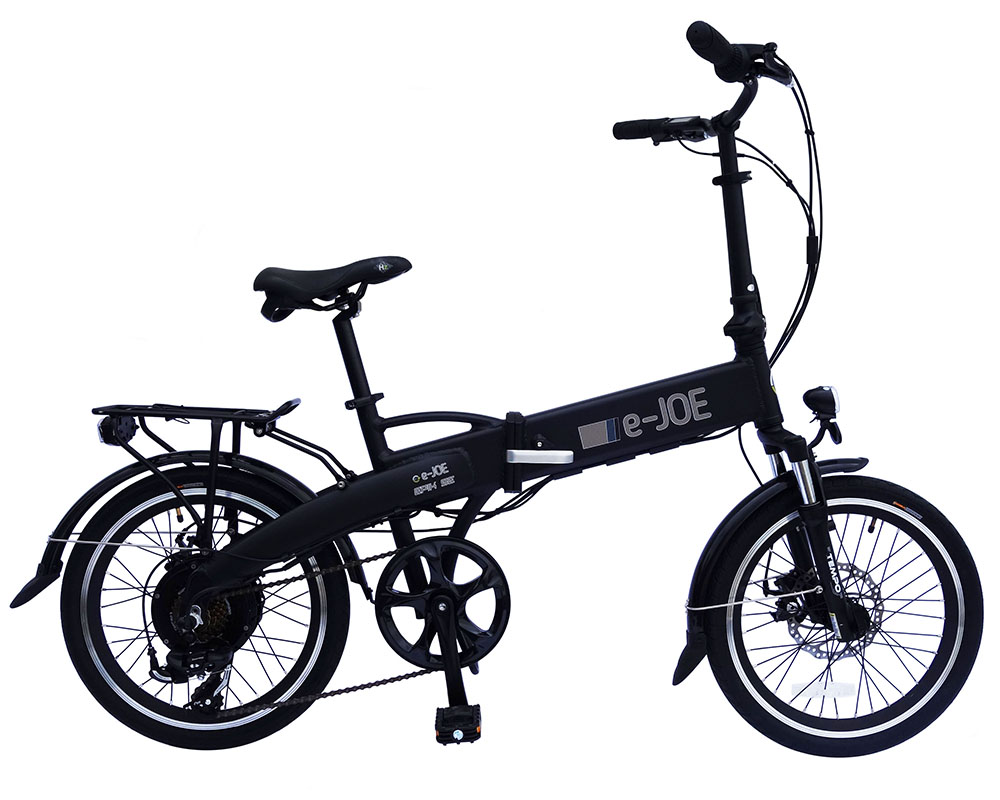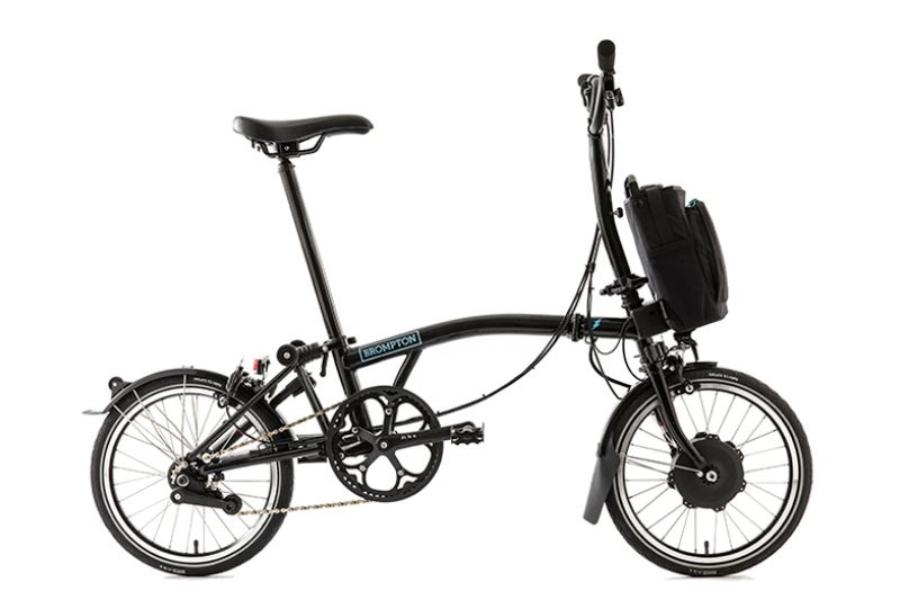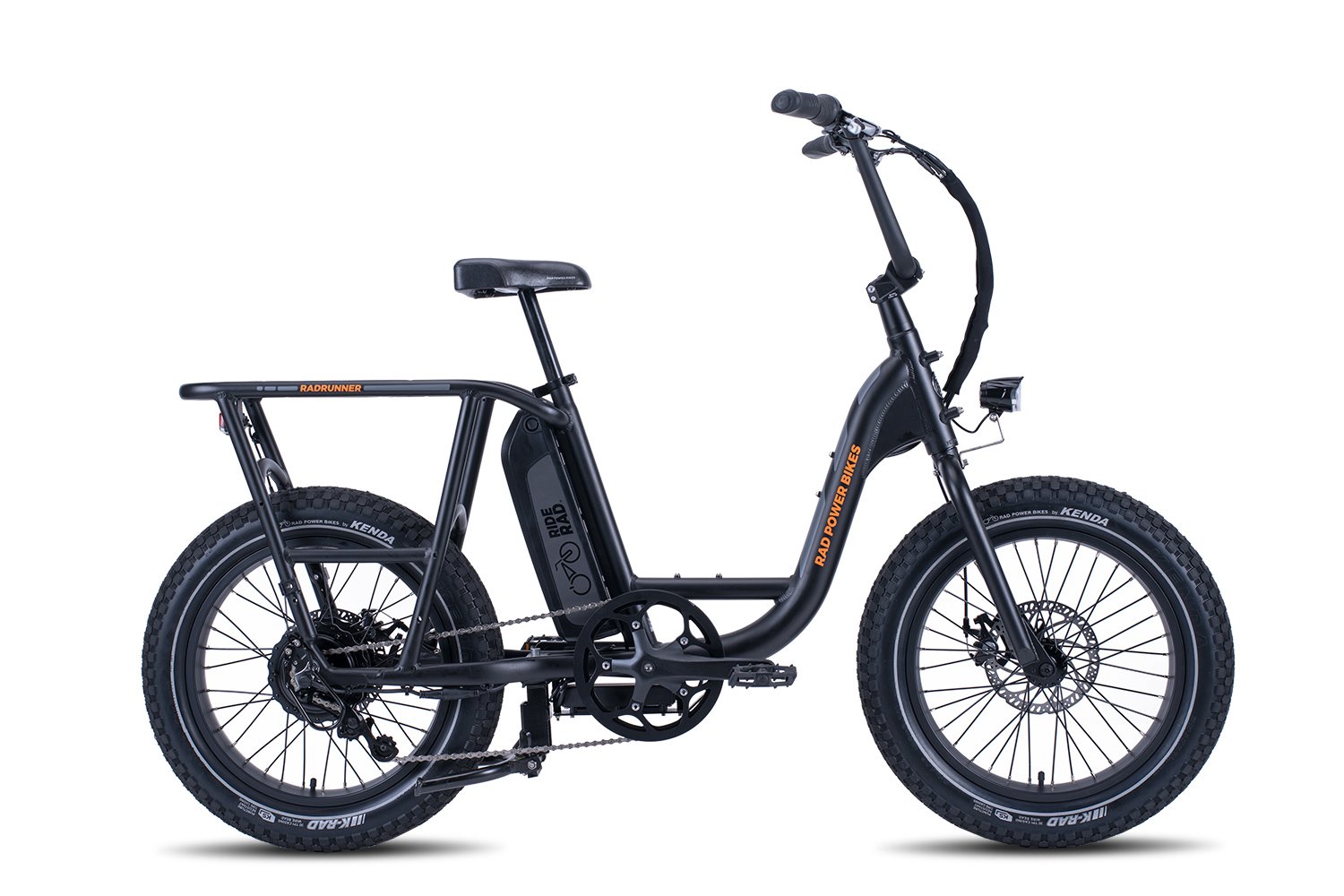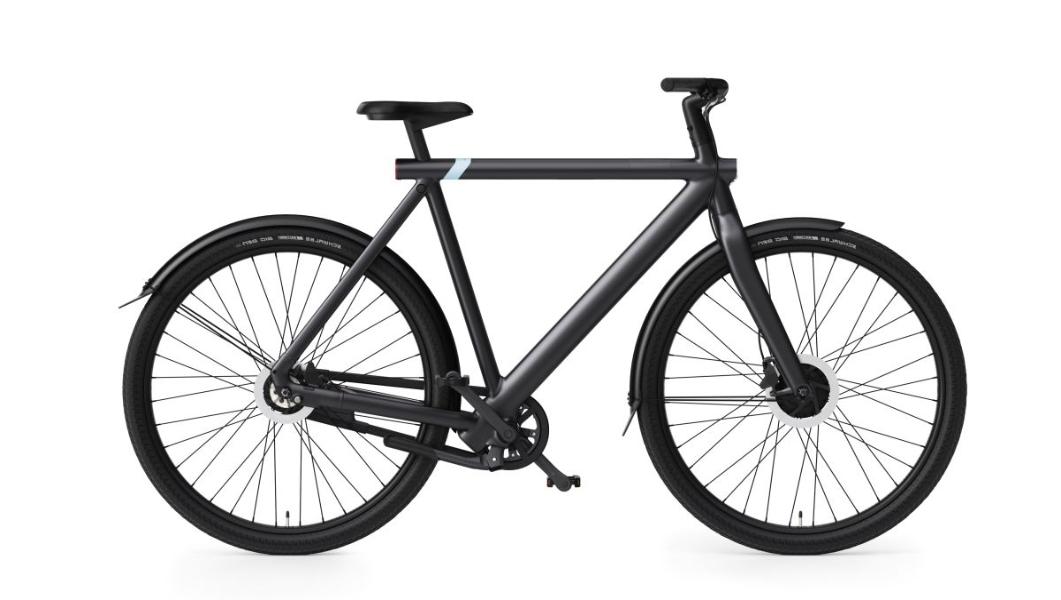The post The Best Electric Bike Batteries: Everything You Need to Know appeared first on eRide Guides.
]]>Granted, you can still pedal an electric bike without a charged battery, but where’s the fun in that?
Batteries for e-bikes also have a limited shelf life, so you must have a great battery for your rides out on the road.
What are the best batteries for your electric bike?
This article will take an in-depth look at what makes up a battery, the features you should look for, and, of course, which are some of the best out there for your electric bike. Keep on reading
What Should You Look For In A Battery?
These are the terms that you will see when looking at electric bikes and batteries. The chart below breaks down what these terms mean (the actual definition and what it mainly means for the power in your e-bike).
| Term | Definition | What It Means For Your E-Bike |
| Voltage | A measure of how many individual battery cells are in a particular battery pack and how those cells are configured (or wired) together |
An e-bike motor has been specifically designed to be used with a specific voltage.
Too little volts won’t give you enough power in the motor for speed. Too many volts will burn up the electronic components in the motor. Most e-bike motors will accept either 36 or 48 volts. |
| Amps | A measure of flow at a certain pressure | The more amps that your motor on your electric bike has, the more it will be able to handle while out on the road.
Volts give your e-bike power; amps are how fast the battery can deliver the volts. |
| AH | “Amp hours” is the rating of the battery which shows the amount of charge stored in the battery |
Amp-hours affect the run time and performance of the battery for our electric bike.The higher the number, the more energy that is stored inside. |
| Watts | A unit of power; one watt is one volt multiplied by one amp |
E-bikes typically highlight their output power in watts.
More watts equal more power (speed) for your e-bike. |
| Watt-Hours | A unit of power per a specified amount of time | Basically, this is the miles per hour your electric bike will be able to travel with the watts provided in the battery. |
What Types Of Batteries Exist For Electric Bikes?
There are many different types of batteries available for purchase for your e-bike. It all depends on your personal preference for your bike, budget, and performance.
Here is a breakdown of some of the well-known batteries you can get to power your e-bike.
Lithium-ion batteries
The go-to battery for electric bikes in this day and age tend to be lithium-ion batteries. They don’t weigh too much and also pack a good amount of power in their slim builds.
Lithium-ion batteries are also low maintenance for the cyclist.
There are a few drawbacks, though. These batteries are fragile and require a protection circuit to maintain safe operation. They also tend to die after two or three years.
Sealed lead-acid batteries
Sealed lead-acid batteries have been around for over 100 years. These batteries are tolerant of overcharging by cyclists and can deliver very high currents.
These batteries are also cheap and can be easily recycled. So, if you are trying to stay within budget, this may be the battery for you.
However, there are some cons to these. These batteries are heavy and bulky and aren’t able to be charged quickly. They also don’t last as long; the typical cycle life with these is 300-500 cycles.
Lithium-ion Polymer Batteries
Lithium-ion polymer batteries are similar to regular lithium-ion in terms of cost, weight, and range.
However, these are also to be molded into different shapes. They don’t have any liquid, either, so they are resistant to overheating.
![Photo Courtesy: [Electrek.co/YouTube]](https://erideguides.com/wp-content/uploads/2020/08/screen-shot-2020-08-06-at-11-59-09-pm-1596772808487.jpg)
Photo Courtesy: [Electrek.co/YouTube]
Nickel-Cadmium Batteries
Used a lot in airlines, you will find a fast charge with nickel-cadmium batteries.
However, these also have low power density and a very high self-discharge rate.
Lithium Phosphate, Lithium Cobalt and Lithium Manganese
These three are different types of lithium batteries with other characteristics that you should know of.
Used in some high-level, more expensive electric bikes, lithium manganese batteries tend to have higher power and better range.
Lithium phosphate batteries take up a lot of weight. However, they have a greater amount of amps than other batteries and will give your electric bike more power and speed.
Lithium cobalt batteries are being produced in high numbers now also. In addition to being used in e-bikes, they are also used in other products like in Teslas and laptops.
Typically, e-bike battery manufacturers chose these over lithium phosphates because they’re lightweight and have double the watt-hours.
The Best Electric Bike Batteries Out Right Now
| Battery Name | Price | Battery Type | Voltage | Amperage | Key Features |
| Universal Power Group UB12120 Electric Bike Battery |
$54.56 | Sealed Lead Acid |
12V | 12AH | Good value for your budget
Perfect for those building their own e-bike on a limited budget Guaranteed compatibility with OEM battery |
| Joyisi 10AH Electric Bike Battery for 1000W |
$270-$300 | Lithium-ion | 48V / 36V | 10AH / 12.5AH | Lightweight design; battery is easy to install and remove
Has a convenient LED power display Includes a USB port to charge mobile and other devices Equipped with a BMS protective plate Eco-friendly materials used in the construction of the battery |
| CYCBT Lithium-ion 48V-13AH Electric Bike Battery |
$264 | Lithium-ion | 36V | 13AH | Has about 1000 charges, three times the cycle life of lead-acid batteries
Has the BMS control system for enhanced electrical protection Reportedly allows cyclists to use it in a wide range of temperatures |
| Mighty Max Baoshi Electric Bike Battery (4 Pack) |
$164.99 | Sealed Lead Acid |
12V | 22AH | Praised for its reliability and build
Includes shock absorbers and a spill-proof casing Long-lasting high performance in high and low temperatures. |
| Flying Horse ModWheel Electric Bike Battery | $349.95 | Lithium-ion | 36V | 11AH | Compatible with 250, 500, 750, and 1000-watt conversion kits
High-quality Panasonic cells At only 5 lbs, the battery is lightweight as well. Over 800 charging cycles 20 miles for a single charge Integrated USB charging port to charge your phone and other devices while you ride Secure mounting and can be locked with a simple key |
What Else Should You Look For In An E-Bike Battery?
Size, weight, and shape certainly come into play. Your battery needs to fit your bike, but it also can’t be too heavy. Otherwise, you’ll have to figure out how to mount it on the e-bike and ride around with it. And, if you have to haul a heavy battery up a flight of stairs, that won’t be good for your back.
Sustainability matters, as well. A battery for your electric bike can be expensive, depending on the specific features. You’ll want to consider reviews from customers to see what battery is more stable and reliable in the long run.
Charge cycles are another factor to consider. They are the number of times you can charge a battery to 0% to 100% in a battery’s lifetime. Each battery only has a certain amount of charge cycles (typically around 1,000 for most of today’s batteries) before they die. Most batteries can get about three years of full charges before you’ll have to replace them.
What Capacity Battery Do You Need?
The batteries on e-bikes have a variety of capacities. Since it’s the most expensive part of the bike to produce, cheaper, lightweight e-bikes tend to have smaller batteries with a smaller range of watt-hours.
Typically, it’s best to get the largest and top-quality battery, which can give you more mile range per charge. 400-500 watt-hours are becoming the norm in the industry as far as manufacturing. However, it depends on the terrain of where you live, the amount of cargo you’re carrying (including your weight).
For a normal ride by yourself on flat ground, you may consider a battery between 250-500 watts. However, if you want a faster ride or plan to carry a child’s seat or pull a trailer, you may want to consider getting more power in your battery.
The best way to know for sure is to do a test ride on a few e-bikes of different power levels to see what you are personally able to ride most comfortably. Be sure to shop in person so that you can ask a salesman questions about the power of a particular bike based on the battery.
Where Is The Battery Placed On An E-Bike?
The placement of the battery depends on multiple factors, including the shape of the bike’s frame.
Many electric city bikes have the battery mounted on the carrier rack in the rear. That works for lighter batteries on lightly loaded bikes that are made for more gentle rides. Having extra weight on a tougher ride, say in the mountains, can affect how a cyclist can handle the bike.
Electric mountain bikes typically have the battery on the down tube, which can make it easier to put the battery on and take it off.
However, e-bike manufacturers are beginning to create more frame-integrated batteries. It can look better that way and give a cyclist better handling as well.
![Photo Courtesy: [CYCBT/Amazon]](https://erideguides.com/wp-content/uploads/2020/08/screen-shot-2020-08-07-at-12-02-50-am-1596773348798.jpg)
Photo Courtesy: [CYCBT/Amazon]
How To Care For Your Battery
Of course, since the battery is what keeps your electric bike moving without putting so much work on yourself, you’ll want to take good care of it. Batteries can last three to five years, depending on how much you use it and how it is maintained.
Store The Battery At Room Temperature
You may be tempted to keep your battery out in extreme weather like during the summer or winter. However, batteries should be kept at around 60 degrees (room temperature), which the standard storing temperature for all types of batteries.
Keeping the battery out in extreme weather will affect the battery power, which affects your bike’s performance on the road. The battery, which always has a limited life anyway, will die even quicker.
Try to store the battery inside when possible.
Use The Proper Tools To Charge Your Battery
Make sure that you use the correct charging kit to charge up your battery. An inappropriate or unapproved charging device could lower the number of cycling charges.
Overcharging the battery after it has already reached full capacity can affect the number of cycling charges as well. Some electric bike experts even suggest keeping the battery charged at only 50-60%. Others say to charge it at 85% at the most.
Don’t Overwork Your Bike
Taking your e-bike at full speed constantly puts a lot of demand and stress on the motor. The motor is fueled by the battery.
The battery will quickly die if you’re always pushing your bike too hard. So, try to go a little slower while cycling out of the road. That means backing off of the turbo mode that your electric bike may have.
How To Dispose Of Your Battery When It Dies
As previously mentioned, your electric bike’s battery will eventually die. So it’s also best to know how to dispose of it properly.
No, you can’t just throw it in the trash! That’s a danger to the environment due to the risk of toxic gases being released from the battery if it gets damaged. Other ingredients in the battery, like lithium and cobalt, can lead to water pollution and other unintended consequences.
Most times, you can recycle these batteries to be reused for something else. Reach out to your local recycling centers to see if they are capable of using big batteries.
Even big companies like Apple, Target, AT&T, and Verizon have recycling plans and accept batteries from consumers. Recycling organization Call2Recycle may also be able to help.
Feel free to comment below on this article and share it with those you know who would love more facts about electric bikes!
We are so happy to share more information about these batteries and electric bikes in general on our site.
There are other great articles on the site that will help you make the right choices on choosing an e-bike and other accessories.
There are also articles that detail more about batteries, including How Fast Do Electric Bikes Go? or How Far Can An Electric Bike Go On A Single Charge?
The post The Best Electric Bike Batteries: Everything You Need to Know appeared first on eRide Guides.
]]>The post Electric Bike Maintenance: Everything You Need to Know appeared first on eRide Guides.
]]>With more possibility of wear-and-tear from riding a minimum of 20 mph (32.19 km/h), some e-bike riders may need to pick up essential mechanical skills to stay safe while protecting their investments.
The most essential parts of your e-bike are the ABC’s: air (in tires), brakes, and chains. These parts must be maintained frequently to avoid potential injury. An e-bikes gears, chains, and frame need a proper clean and lubrication on a weekly or monthly basis, so keep supplies like rags, degreasers, and lubricants in your tool kit.
To understand what parts need careful maintenance, why that is, and how to accomplish some more difficult mechanic tasks – read on.
Before you examine specific parts, ensure you safety check both the bike and gears before rides, and create an easy-to-stick-to maintenance schedule.
Check These E-Bike Parts Before Every Ride
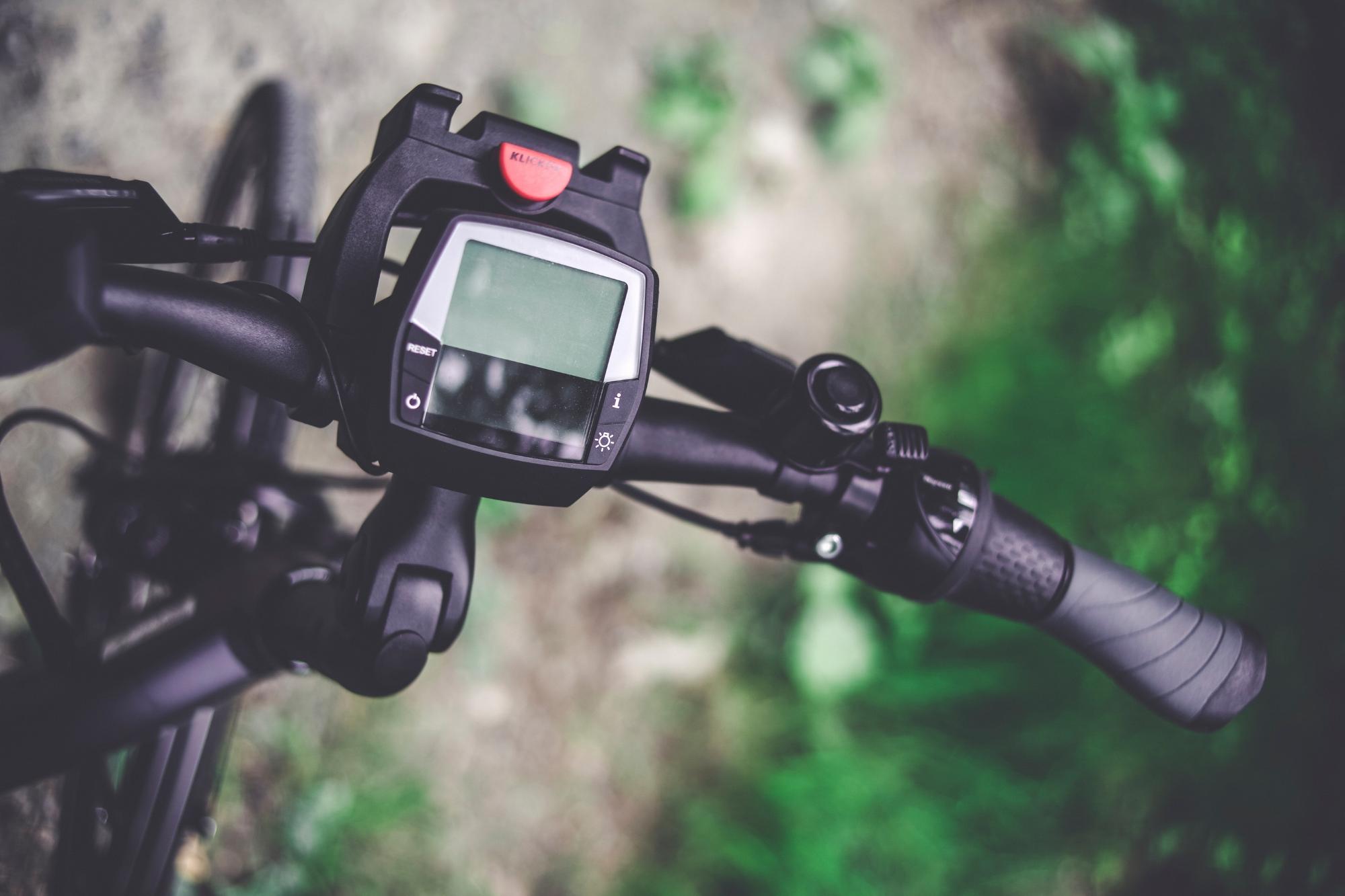
Photo Courtesy: Markus Spiske/Unsplash
It’s essential to check your tires, headset, wheels, and brakes before every ride. It’s common for e-bike riders to hop on their bikes every single day, assuming that it’s in the same condition that they left it in. A quick safety check could save your life.
Make a habit out of doing the following checks until it becomes second nature. It’s rare, but even experienced and frequent cyclists have left a quick-release loose every now and then. Be sure to do another check every 200 miles (or 2 weeks), so minor problems don’t become major.
Every Ride
- Inspect tires for cuts or wear and inflate to manufacturer instructions
- Check the headset by pushing on the front brake and jiggle the handlebars back and forth as if you’re turning. A knocking or moving headset needs to be tightened immediately. To better confirm a rickety headset, put your fingers on the junction of the frame and headset and rock the bike frontwards and backward.
- Tug on the quick releases on both wheels gently (don’t yank it to the point they come off). Tighten down the quick release if you notice and loose bolts.
- Utilize the brakes by rolling the wheels at less than 8 mph (5km/h) to avoid an accident in case the brakes fail. Brakes should engage fully and keep wheels from moving.
- Spin the wheels after picking up the front end of your bike, then the back end. The wheel should never brush up against the brake pad.
Every 200 Miles or 2 Weeks
- Inspect the chain for rust and lubricate these parts if you notice excessive grinding, squeaking, squealing, or you have difficulty pedaling (on a pedal-assisted e-bike). If you live in a humid or wet climate, you should lube the chain every week or 100 miles.
- Check the brake pads; first in the rear, then in the front. Most pads have tiny grooves in them, which act as a way to stop the bike at high-speeds. If there are no grooves visible, get a replacement immediately, or the brakes could fail.
- Don’t forget to check the cleats on your shoes, because they help grip the pedals.
- Remove wheels and gently wipe down the frame of dirt and oil while checking the e-bike for imperfections like paint chips or cracks.
Road Tool Kit Recommendations
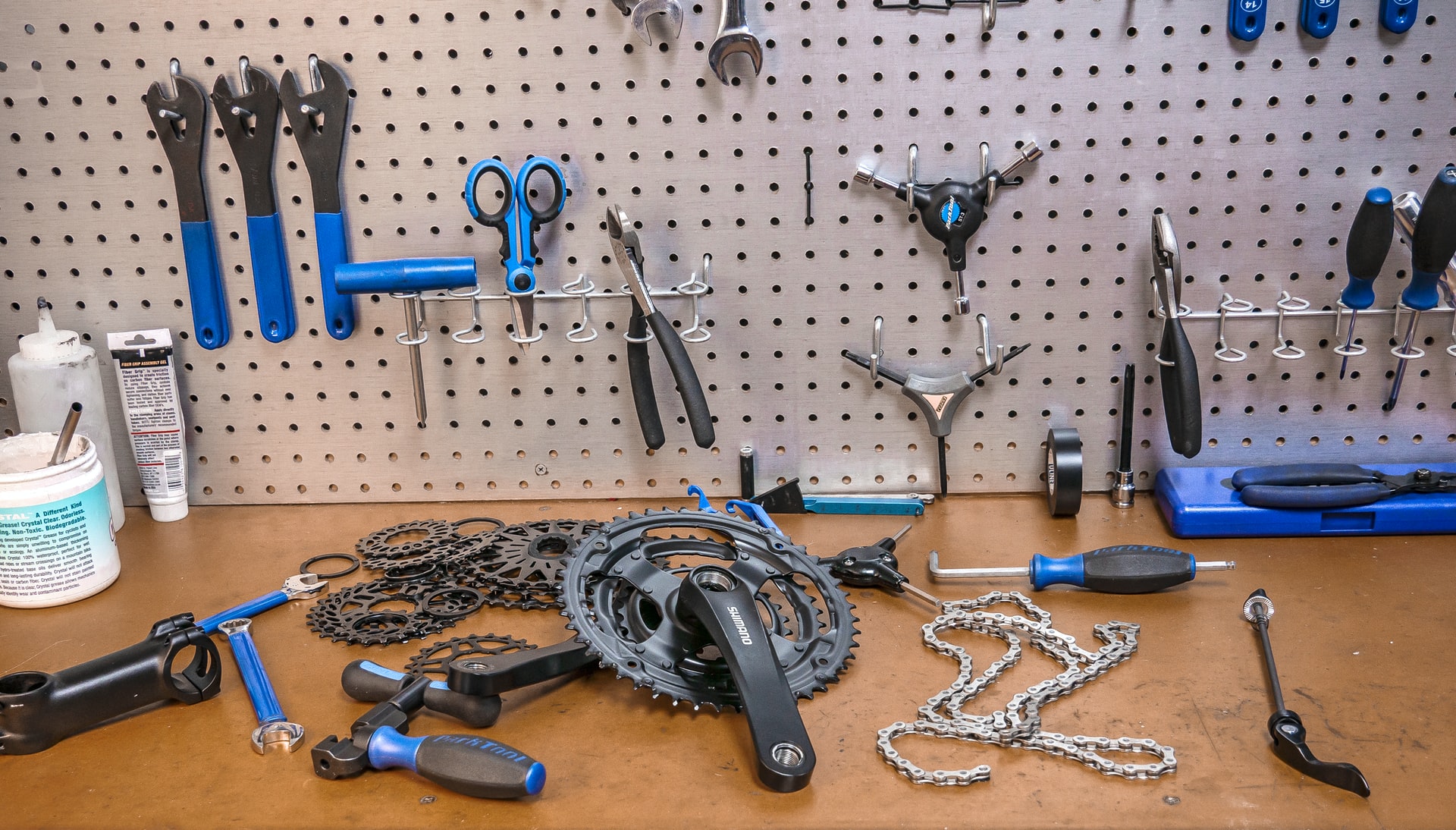
Photo Courtesy: tom Conway/Unsplash
Keep a tool kit with you the size of a fanny pack or smaller located on your bike or on your person. These tools will help you perform quick maintenance incase you’re far away from home, or can’t make it to a mechanic shop in the next hour.
1 Inflation tube that fits the wheels on your bike. It’s not just the size that’s important here, but the width of the Presta valve (standard tubes for bicycles).
1 Patch kit to repair tubes or wheels quickly.
1 Small pump for your wheels. I prefer a hand pump and a CO2 inflator.
2 CO2 cartridges that fit your specific pump.
2 Tire levers.
1 $20 bill for emergencies.
Home Tool Kit Recommendations
While the road tool kit will have only necessities, your home tool kit will have everything else needed for complete maintenance. The below tools are necessary for any e-bike upkeep you’ll need to do in the future.
1 Multitool Allen Keys for crank bolts and other bolts.
1 Multitool Torx Keys for the star shape heads usually found on the handlebars.
1 Tire and shock pump for your home tool kit specifically. Although you already have a small pump for your wheels, a larger pump can instantly fill your tires once the cylinder is pumped. A shock pump can adjust air pressure to avoid sag and encourage a more comfy ride.
1 Lubes like WD-40 spray, but the drip is better because the lube won’t spray on your pants.
1 Contact cleaner or degreaser, which dries all of the water off your bike after washing it. A contact cleaner is useful for gears and chains prone to rust, while a degreaser takes excess grease off the same components.
1 Chain breakers are great for breaking off the rusted or unusable chains on your e-bike. You can also invest in a chain checker, which tells you the remaining life left in a chain. However, this isn’t necessary – but it is handy if you ride your e-bike frequently, or your chains are prone to snapping. If this is the case, lubricate these parts more.
1 Quick link pillars quickly unsnap chain components and snaps them on just as fast. It’s really helpful if you often tear your hair out replacing chains.
1 Cable cutters cut through outward and inward cables quickly.
1 Chain whip holds onto the chain cassette to keep it in place while replacing the drivetrain. A freewheel removal tool helps you remove the whole cassette off of the body – so use both tools in tandem to make your life easier.
3 pairs Nitrile gloves protect your hands against oil and grease.
Some other bonus tools include tire leavers to remove stubborn tires, torque wrenches, so you torque screws to product recommendations and a decent wrench.
Stick to City Sidewalks to Avoid Heavy Damage
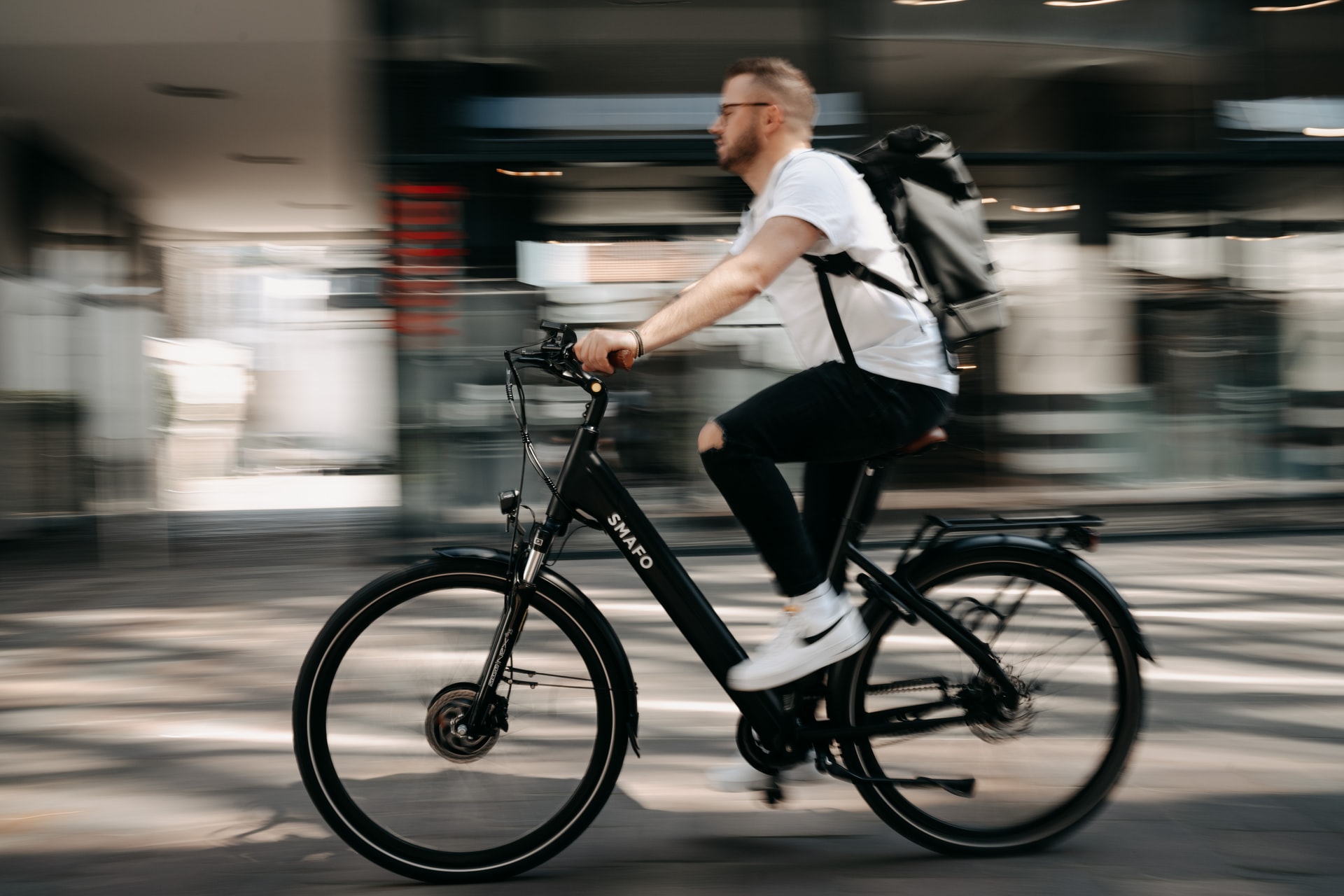
Photo Courtesy: Wolfram Bölte/Unsplash
E-bikes are separated between two types of terrain: rough trails and leisure. Most e-bikes are geared towards leisure activity because consumers use these to go to and from work. Mountain bikes are useful for rural communities where cars are expensive or inaccessible.
Rough Trails:
Similar to a traditional bike, e-bikes are capable of cycling up steep hills for an extended period with the proper battery and motor (750w minimum preferred). These bikes are available at hardtails or full suspension. The full suspension is better for rougher ground. If you’re interested in biking on rugged trails, your e-bike will show more damage quicker.
Leisure and City:
All e-bikes can function spectacularly on flat land or in a cityscape because they were initially designed for this purpose. Since e-bikes ride better on a flat surface, damage on your bike will be minimal as long as you don’t ride over potholes or deep cracks. Leisure and city e-biking will protect the components’ long-term.
How to Properly Store Your E-Bike
Storing your e-bike correctly can help extend or preserve its lifespan. E-bikes are best stored in a cool, dry place, away from frequent temperature changes and high humidity. Store e-bike batteries partially share and separately from the e-bike if you’re doing so long-term.
The ideal temperature for storage is between 32 to 68F (0 and 20C). If you’re in the middle of a cold snap and don’t have a heated garage, stick your e-bike inside your apartment or home. Once temperatures dip below freezing, the components and oil will freeze with it.
Always clean your e-bike before removing the battery or storing it long-term. A build-up of water, debris, and salt are natural, but paint can peel off in a short amount of time if it sticks to the frame during storage.
How to Safely Clean and Lubricate Your Bike

Photo Courtesy: Karolina Grabowska/Pexel
Cleaning your bike frequently is the most important aspect of bike maintenance. A dirty or greasy bike could start to erode the rest of the components, which will lead to costly repairs. However, if you clean the e-bike with incorrect products, you could as do permanent damage to your battery, motor, or wheels.
Basic Supplies
Before you start cleaning your bike, ensure that you have the following supplies:
- Cleaning rags: You don’t need anything fancy. Ripped up shirts or face cloths are good enough to soak up oil, grease, and wax. Useful for general drying and cleaning.
- Water: Be careful with water, and never use a high-pressure hose to rinse off or clean sensitive bearing systems, your motor, or battery.
- Brushes: Toothbrushes are helpful for hard-to-reach places, but a short bristled long brush can buff and scrape off dirt and debris off large surfaces.
- Soaps and Cleaners: Diluted dishwashing soap is cheap, yet effective for getting rid of grease and grime. Be sure to avoid using soap on chains without lubricant.
- Lubricant: There are two types of lubricant, dry or wet. I prefer dry because the lube won’t whip on your pants while biking, but only use it if you live in a dry climate. For humid or wet climates, use wet lube as it’s less likely to rinse off during a rainstorm.
- Degreaser: Use a bike specific degreaser to clean up the chain. Dispose of all solvents properly because they can damage the environment.
How to Prepare E-Bike for Cleaning
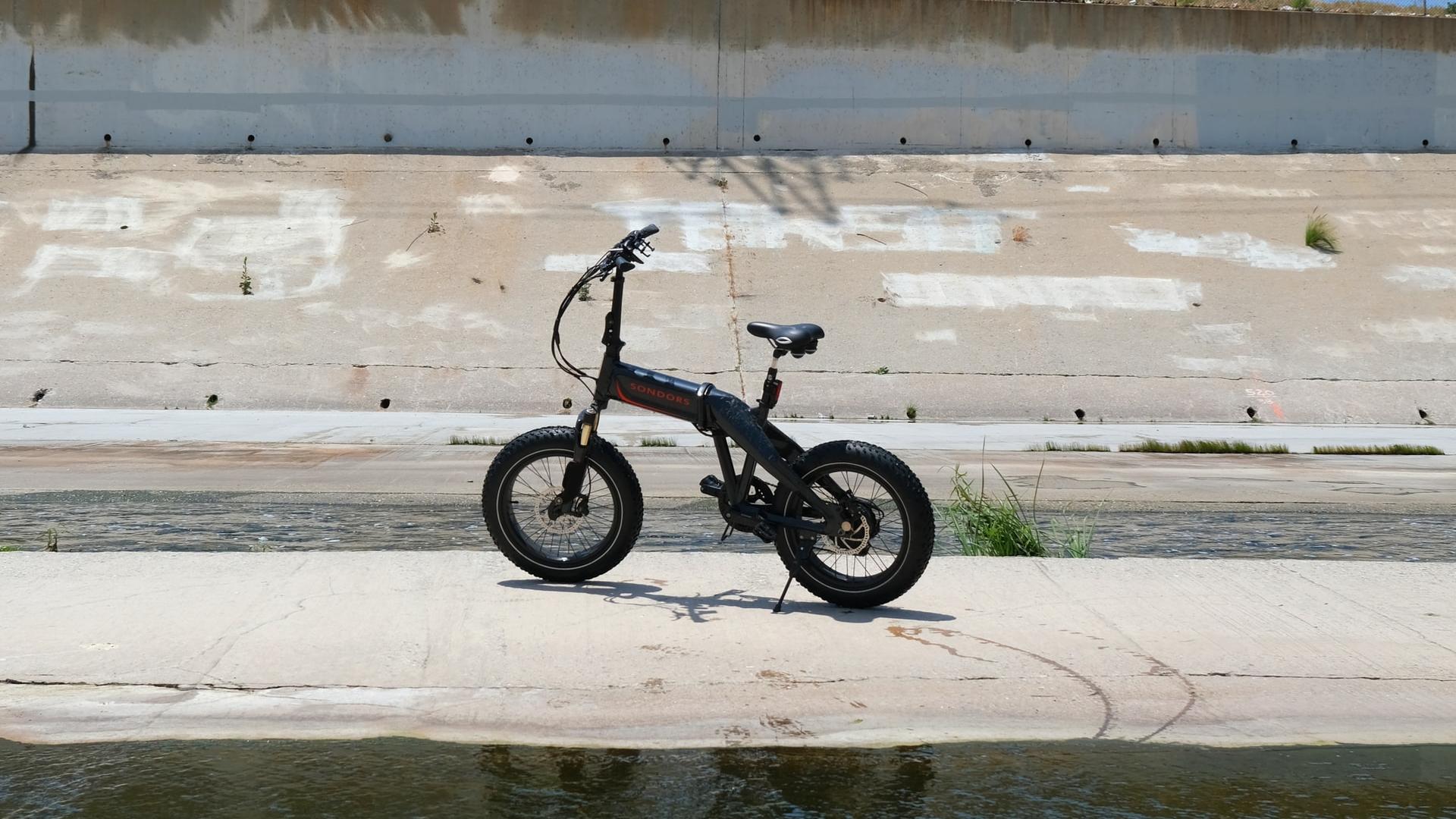
Photo Courtesy: Mike Von/Unsplash
Once you have your supplies, check the e-bike manual to see how much water it can resist. Every e-bike comes with an IP rating that measures how much rainwater the e-bike can withstand and how much jetting water it can sustain when cleaning.
When browzing for e-bikes, you’ll likely find bikes certified for IPX4 or IPX5. At this certification, the product is suitable for splashing water (4) or jetting water (5). At both of these ratings, you can ride your e-bike in the rain without suffering permanent damage. This also means you can use gentle water to clean off dirt and debris.
Next, take down the display if necessary. If it’s permanently attached, you can place a water-proof poly-film to protect it against soap and water.
Always remove the battery, even if the manual says it has protection against short-circuiting. It’s better to be safe than sorry because a new e-bike battery can cost over a thousand dollars. Place it away from the cleaning area, preferably in your home or where water won’t reach.
It’s better to turn the e-bike upside down and place all the weight on the seat and handlebars. Use a towel or poly-film to protect these areas because they’re likely to be soaked in water during cleaning. You don’t need to remove your tires.
Start Cleaning
Start washing your e-bike with water only, then scrub with a cloth or brush to remove the dirt. Use the toothbrush for small places like chains or in between smaller areas. If the water gets in the battery compartment, don’t worry – they’re designed with a space to drain a small amount of water.
While the bike is still wet, use a bike degreaser to clean the drivetrain (chainrings, chain, derailleurs, cassette). Don’t wash it off right away. Let it settle for 5-10 minutes then wipe the excess off with a wet cloth.
Finally, tackle the brakes. The disc brakes are a sensitive component, so only use a disc brake cleaner and not the dishwashing liquid as these can seize up the brakes.
After cleaning the e-bike, dry all components with a dry cloth (unless you used a degreasing or lubricant solution on that component). Never let the e-bike dry on its own, because humidity will make it look dirtier. The battery compartment must be completely dry before installing it back.
6 Important Maintenance Tips

Photo Courtesy: Markus Spiske/Unsplash
Although going to a mechanic is one of the first things to consider if a problem occurs, there are many basic bike maintenance skills you can learn and perform at home. The following are some essential maintenance tips that will prolong the life of your e-bike.
Keep Drivetrain Well Lubed and Clean
A lot of e-bike enthusiasts compare cleaning your drivetrain train to changing your engine oil – and for a good reason. Lubing your chain ultimately extends the life of your e-bike, similar to how oil does in your car. If you go too long without changing it, your bike/car will breakdown.
Clean your drive train at least twice a month if you ride an average of 200 miles every two-weeks. However, if you keep to sunny weather and paved roads, you can get away with cleaning it once a month. For muddy or wet climates, clean it more frequently (once a week or more if you ride your bike to and from work in the humidity/rain).
Keep in mind that cleaning the chain can take a while if you’re inexperienced. If you’re in a hurry, take a wet tag without soap and wrap it around the chain. Turn the pedal backward, so it cleans the components.
Ensure Nuts and Bolts are Tight
Tightening the nuts and bolts on your e-bike is a simple process that takes minutes – but it can save your life. You wouldn’t want your handlebars popping off what you’re riding in traffic. Maintain a tight bike to increase performance, avoid severe wear, and for your safety.
Take your torq keys, Allen keys, or wrench and tighten all of the nuts and bolts throughout your bike. Do a weekly check, but always pay close attention to a rattling or rocking sound. These sounds could indicate a loose screw.
Check the manufacturers’ warranty before tightening anything on your e-bike to ensure you have the right torque specs. Over-tightening could cause severe damage, while vehicle under-tightening could result in a loss of performance. For carbon parts, use a torque wrench that’s set to the appropriate torque level for carbon parts, or they won’t be at the proper level.
Check Tire Pressure
Every three of four days, if you ride your e-bike daily, check the tires’ pressure. Since e-bike wheels are so thin and small, a lot of air escapes from the bike tubes in a matter of days. It’s essential to pump your tires between 80-120 psi for optimal performance but, check the manufacturer label before going any higher or lower.
Keep a good floor pump in your home with an air pressure gauge, so you can accurately pump up your tires. Tire pressure is dependent on more than one factor, such as tire size, body weight, type, riding conditions, and road surface. As a rule, the wider the tire, the lower the pressure.
Remember: a small difference in tire pressure can affect handling and comfort. Sidewalks and roads perform better on low psi, while rough terrain requires higher psi.
Adjust Breaks
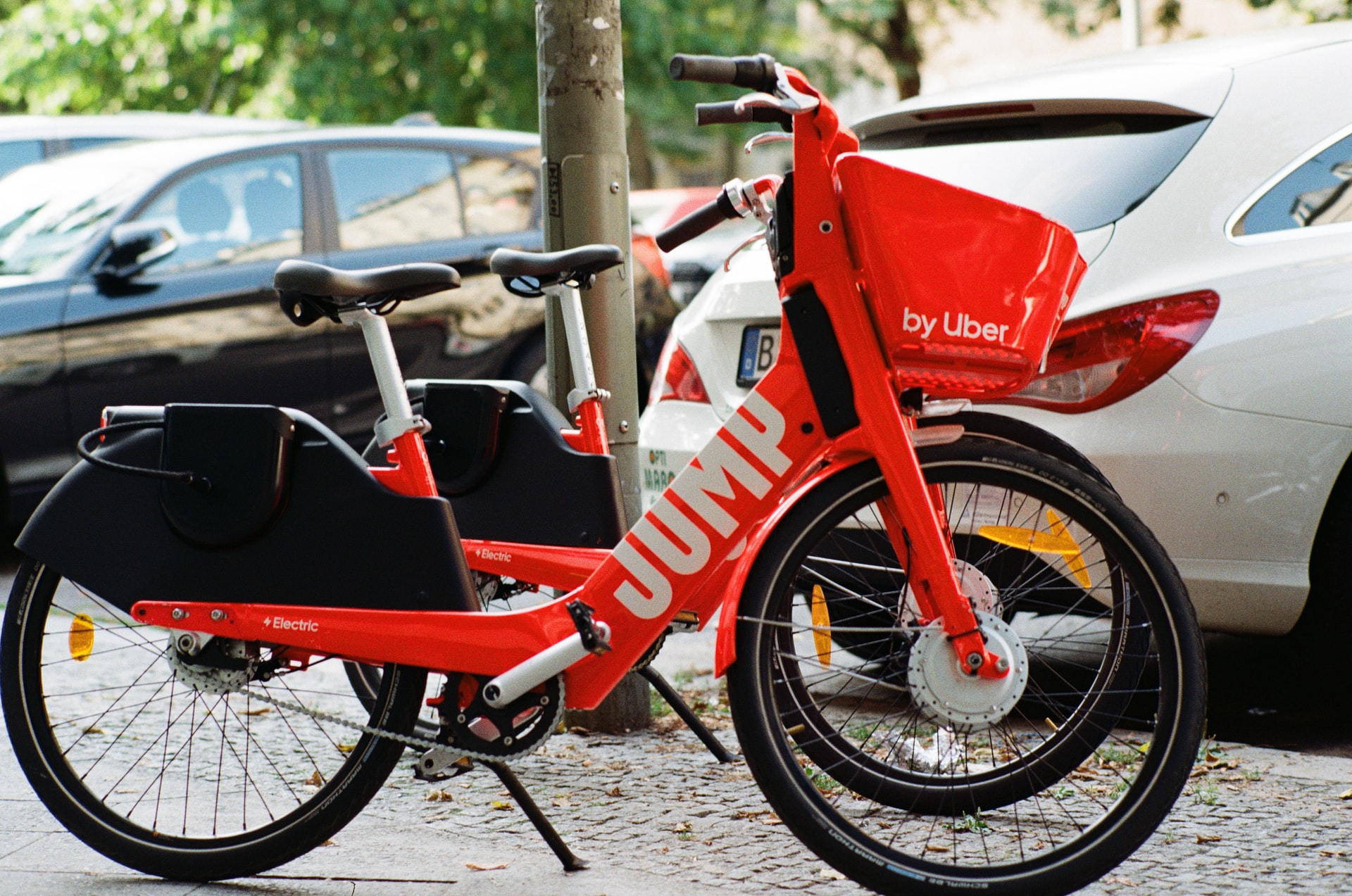
Photo Courtesy: Markus Spiske/Unsplash
Check the breaks every time you ride without fail because general wear and tear could prevent the brake cables or discs from functioning. Not only will checking the brakes protect yourself from harm, but other riders and pedestrians will benefit from your safety precautions.
First, test the brakes by rolling the wheels at less than 8 mph (5km/h) to avoid an accident in case the brakes fail. Brakes should engage fully and keep wheels from moving. Then, look at the brake pads for general wear and tear. While you’re at it, ensure the pads toe-ins touch the braking surface first when engaged.
Disc brakes take more effort to keep clean. Make sure the rotors avoid contamination from dirt and debris to maintain maximum performance. Use brands such as Muc Off (one of the best disk brake cleaners) or WD40 for lubrication.
Index Gears
After riding your e-bike for an extended period, you’ll notice that your gears don’t shift as quickly or as smoothly as they used to. If the derailleurs and cables aren’t damaged, you can re-index your gears to improve on your e-bikes’ shifting ability.
Find your bike’s barrel adjuster. It’s usually on the rear derailleur, or by the shifters. Next, determine if your cable needs a tightening. Turn the pedals as you change gears, and watch if the chain moves easily between the cogs. If it doesn’t, tighten the cables.
Finally, adjust the cable tension by turning it clockwise to tighten, or counterclockwise to slacken. The barrel adjuster will click as you turn, with every click consisting of a quarter-turn. As a positive, if you’re using an electronic shifter, you likely won’t have to reindex the gears.
Replace Components
Some components are too damaged for maintenance and require a replacement. The following are standard components that you should check regularly. Replace any of these components immediately to avoid severe injury or damage to your e-bike.
- Chain: A common component that needs a replacement every 2000 to 4000 miles. They may need a replacement sooner, depending on the weather. A chain checker will give you an accurate description of the wear. For example, if the chain stretch is above 0.75%, you should immediately get a new chain.
- Tires: Depending on the terrain you ride on, these may require more frequent replacing. Tires typically last around 1000 to 2000 miles. You likely have to track your tire miles manually, but others have an indicator on the frame. If you take great care of your tires, you can get away with a maximum of 4000 miles – but nothing more.
- Cassette: Every time you replace your chain – check the cassette. A cassette needs to be replaced with every second chain replacement, so they last a total of two chains. If gears are skipping, the cog is worn out. Unfortunately, once the cog is worn, you’ll need to replace the entire cassette.
- Brake Pads: Never skimp on your brakes because you could seriously injure yourself or other riders/pedestrians. They don’t require replacement often, which is why cyclists overlook them. If you see no grooves in the brake pads, that means its way past due for a replacement.
Are you an e-bike enthusiast?
Are you interested in more in-depth articles on e-bikes?
Stay on our website for more content.
Before you go, leave a comment about your thoughts on e-bike maintenance tips, or read one of our other on everything you need to know about e-bike and its motors top speeds.
The post Electric Bike Maintenance: Everything You Need to Know appeared first on eRide Guides.
]]>The post The 4 Best Electric Bikes for Cities appeared first on eRide Guides.
]]>Whether it’s crowded public transport, gridlocked traffic, or costly Uber trips eating away at your bank account, it’s never easy getting from A to B when there are thousands of other people in your way.
But all is not lost! eBikes are the newest player on the block when it comes to travel, and there are some great benefits to them you might not have considered.
They combine all the best parts of riding a bike in the city and cut out a whole lot of sweat-inducing pedaling to sweeten the deal!
We have compiled a list of the 4 best electric bikes on the market to help you get around the urban jungle without all the headaches that usually come with commuting!
4. e-Joe – Epik SE
The eJoe Epik SE Electric Folding Bike is a great bike for city living. Its foldable design allows for easy storage in small apartments or in the workplace. Completely folded, it measures 35″ x 24″ x 17″ (89cm x 61cm x 43cm.)
The Epik SE boasts a very respectable 40-mile (64km) range and a 500-watt motor. In addition to this, it has a rear luggage rack which will help you transport cargo that won’t quite fit in a backpack.
The Epik SE comes in four different colors which will definitely help you stand out of the crowd!
Additionally, the Epik SE comes fitted with puncture-resistant tires, 5 levels of pedal assist, and a thumb throttle for when that hill seems just a bit too steep to be bothered with!
The front suspension is a little soft on this bike, so if you’re in a city with a lot of potholes, you might find there are a few uncomfortable bumps along the way if you don’t keep your eyes open, though it will keep you comfortable as long as you avoid any big holes.
The Epik SE is a little on the heavy side, weighing in at 50lbs (22kg) including the battery.
It does come with an in-built handle to help carry the load, but if you have a lot of stairs to contend with, this will definitely be a bit of a workout.
The battery is internal when the bike is in its riding position, but you are able to remove it once it has been folded to help distribute the weight.
Coming in at $1399, it’s in the moderately priced, and it will get you a long way on a single charge if you don’t mind lugging it around with you.
Pros:
- Reasonably Priced
- Good Range
- Decent Luggage Options
Cons:
- Bulkier than Average
- Heavy
- Soft Suspension
3. Brompton – E-bike M2L
The Brompton Bicycle brand has been well established long before electric bikes were even conceived of. Their electric models emulate the same level of sophistication that their customers have come to expect from their products.
This bike has a max range of 20-45 Miles (30-70km).
By far the Brompton M2L is one of the smallest foldable eBikes on the market, measuring just 22.2” x 23” x 10.6″ (56.5cm x 58.5cm x 27cm).
It achieves this by having relatively small wheels, measuring at just 16″ (40cm), and by folding in 3 locations rather than just a single middle hinge.
It has rear suspension in the form of a compressible rubber section where the rear wheel folds but lacks any dedicated front suspension.
The handlebars do have a small amount of flexibility that helps to cushion minor bumps that you may come across, but any serious potholes or consistently rough road may cause a bit of discomfort in the hand and arms after prolonged use.
This model comes with some extras along with the bike to add to the utility, including a 1.5L pocket for storage in addition to simply holding the battery.
This is easily removable to distribute it’s already lightweight, weighing in at just 36lbs (17kg) including the battery, across two hands.
The M2L has a base model, as well as some extra add-ons that you can buy when you place your order, such as a fast charger and a 20L city bag to help you carry all your extras.
This bike is on the expensive side of the spectrum, coming in at around $3,200 and with the added expense of the extras to get the most out of it, this can be a significant drawback to those who are trying to save money.
Pros:
- Reputable Brand
- Lightweight
- Very Small Folded
Cons:
- Expensive
- No Front Suspension
- Extras add to Price
2. Rad Power Bikes – RadRunner 1
If you need an eBike that will replace any other form of transport you could possibly need, the RadRunner 1 is hard to go past.
The sheer amount of cargo that you can pack onto this thing makes it so much more versatile than any other eBike before it. It has a rear rack that can hold up to 120lbs (54kg) and even more storage can be added onto that!
It has big, beefy tires to keep you moving when you’re laden down with a whole lot of cargo.
The inclusion of a dual leg kickstand will ensure that the bike won’t topple over when you step off it even if you leave all your belongings on it, and adds stability when you are loading and unloading the bike.
This bike really is built to get you, and everything you need to carry, where you need to be. It has a 750W motor to keep you up to speed and on the move.
This bike is great for families as well, with the rear rack being suitable for a children’s seat, or even a second padded seat for an adult.
It has a range of 25-45 miles (40-72km) trending towards the lower end when it is fully loaded up. Given that it is so purpose-built for sturdiness and carrying capacity, this bike isn’t foldable and weighs a very heavy 65lbs (29kg) so it is definitely a factor to consider for those living in high rise structures.
Priced at $1,199, the RadRunner 1 is incredibly well priced but doesn’t skimp on quality in the slightest.
For those living in the city who have reservations over getting an eBike because they’re concerned they can’t carry as much as a car offers, this bike is definitely the solution!
Pros:
- Great price
- Huge cargo capacity
- Great for families
Cons:
- Doesn’t fold
- Very Heavy
- Low range when fully loaded
1. VanMoof – S3
The VanMoof S3 is one of the most sophisticated and modern electric bikes on the market. It’s a stylish bike with a whole load of features packed into it, with barely even a hint that it’s an electric bike at all to the casual observer!
This bike is so advanced that it even comes with an app so you can manage all the settings, such as the speeds at which gears change. It also sets the max assisted speed to the legal limit of the country you live in!
The S3 has a 500W motor and a ‘turbo’ feature to help you take off quickly. It also has the benefit of full-sized bike wheels, which make for a smoother ride on rougher roads.
The fully enclosed drivetrain will make sure that your chain stays where it’s supposed to be, no matter what.
The main draw of the VanMoof S3 is the incredible security features. The S3 comes fitted with a magnetic rear wheel lock as well as an alarm and tracking system, all controlled through your phone!
Even better, if you do have your bike stolen VanMoof will send someone to collect it on your behalf.
It weighs 41lbs (19kg) so it’s definitely on the heavy side and even more so if you splash out on the extras, such as a front and rear bag which can carry an additional 55lbs (25kg) of cargo along with you.
It boasts four gears, though the gear switch is automatic without a manual override.
With a max range of a huge 37-93 miles (60-150km) you will definitely be able to get where you’re going and back on a single charge!
At $1,998, it’s a bit of an investment but it is built to last, so it is something that you’ll be able to keep for a very long time.
Pros:
- Amazing theft prevention
- Huge Range
- Full-sized wheels
Cons:
- Heavy
- No manual shift
- Doesn’t fold
Hopefully, these suggestions help you on your journey to finding the perfect electric bike for you! There are so many great products on the market and even more on the horizon as the technology advances.
There has never been a better time to start looking at electric bikes as an alternative form of transport.
There is plenty to learn about eBikes, so make sure to have a look around the site and learn a thing or two about these great vehicles before you rush off to make your first purchase!
The post The 4 Best Electric Bikes for Cities appeared first on eRide Guides.
]]>The post How Much Does an Electric Bike Cost? appeared first on eRide Guides.
]]>Depending on where you look, you’re likely to see wildly different price tags ranging from $500 to well over $10,000!
How can you tell whether you’re getting a good deal?
There are a variety of features and aspects to consider when making your purchase, but a general rule of thumb is that an electric bike between $1,000 and $3,000 will give you a good balance between performance, quality, and price.
That being said, there is a lot of variety between different types of electric bikes and their intended purposes. There are specialty eBikes for a whole variety of tasks and activities, and the specific demands of each of those activities can impact the final price.
Before I purchased my first electric bike, I was at a loss for what I needed and how that should reflect in the price, but you can reap the rewards of my trial and error!
Below are some of the most important things to consider before you buy your first eBike.
And more importantly, how much those things will impact the final price!
The first thing you’ll need to know is the difference between the three classes of electric bikes.
Class One:
Class one electric bikes have no throttle and only offer pedal-assisted power. The max speed of these bikes is 20mph (32kph). These bikes are typically regulated the same as non powered bikes.
Class Two:
Class two electric bikes have both pedal-assisted power and throttle, with a max speed of 20mph (32kph) just like the class one electric bikes. In most places, these bikes are also treated the same as regular bikes.
Class Three:
Class three electric bikes are only equipped with pedal-assisted power but have a greater max speed of 28mph (45kph).
These bikes have varying legislation governing how they are treated, with some places treating them the same as motorbikes. It is important to find out about local legislation before purchasing a bike of this kind to avoid fines.
So, once you’ve decided on the class of eBike you’re going to purchase, it’s worth taking a look at some other features that can have a big impact on price and quality.
Folding or Non-Folding
Electric bikes come in a huge amount of different shapes and sizes. The main decision you’ll want to make before you pick out a specific body type is whether you want a foldable eBike or a non-foldable model.
Folding eBikes
The main draw for folding eBikes is the ability to keep it stored out of the way. It’s a great path to explore for people living in apartments, or if you’re planning on taking it to work with you.
The compactibility of these models also makes it much more viable to take with you on public transport or even in the back of your car if you want to take it for a leisure ride far from home.
These benefits don’t come without their downsides of course. Foldable bikes tend to have much smaller wheels than their non-foldable counterparts, which can make a bumpy road quite a bit less comfortable than it would be otherwise.
The impact that smaller wheels have on speed is less severe than it would be on a standard bike thanks to the electric motor, but if you plan to use pedal power to get above the speed cap that electric bikes have, you will have a tougher time on a foldable bike than you otherwise might.
Non-Folding eBikes
Much like a regular non-folding bike, there is plenty to recommend a non-folding eBike. If you want to take your eBike on trails, you’ll definitely want to invest in a non-folding model. The increase in stability that the rigid frame and larger wheels afford are indispensable when you’re riding on anything other than paved roads or manicured grass!
Another feature that these models have over the folding variety is their ability to carry cargo. The lack of hinges and locking mechanisms mean that non-foldable eBikes can carry more weight along with the rider without risking something coming loose.
The obvious downside to non-foldable eBikes is their size. It is a lot easier to store an electric bike when you can fold it up and stick it in a corner. If you’re living in a small place, or you need to take it inside with you to keep it safe at work, things might get a little crowded with the addition of a larger model.
What Else to Consider?
There are so many other little bits and pieces that you could worry about when you’re buying your bike that it could stop you from buying it altogether.
Luckily, you really don’t need to focus on most of it. Once you’ve picked out what class and general body type you’re happy with, there are only a couple of other things to think about.
Range:
Knowing how far you’re going to get on a single charge will save you a whole lot of sweat and leg pain. Once the power cuts out of your eBike, it’s still ridable but the added weight of all those electronics can definitely be felt when you’re doing all the work!
Most manufacturers will have a range listed on their websites, and you can expect to get anywhere from 20 miles (32km) up to around 40 miles (64km).
Once you have your bike, it’s always a good idea to give it a full charge and then go see for yourself how far you can get. There are plenty of factors that can impact the range of the product you receive and you don’t want to overestimate how far you’ll get!
Intended Purpose:
Having a good idea of what you want to do with your electric bike will inform a lot of the decisions you make about the final product you purchase.
If you plan to go offroad, you’ll likely want a big wheel eBike with good suspension.
If you’re planning to use it as your main commuting vehicle, it might be wise to go for a model with disk brakes and high-quality lights to avoid accidents.
If you want to carry a lot of goods with you, it is a good idea to look at bikes with racks and bag slots to make certain you don’t have to leave anything behind.
Generally speaking the details sort themselves out once you’re clear on how you intend to use the eBike. Once you’ve sorted that out, the marketing buzzwords and extra fluff that companies try to sell you won’t seem so daunting!
How Will These Factors Affect the Total Cost of Your eBike?
Naturally, these wide varieties of differences will impact the total cost of your eBike. The table below will cover the main varieties of eBike and their adjusted value.
| Type | Purpose | Cost | Why? |
| Standard | General riding activities | $1,000 – $3,000 |
Quality batteries, motors, and engineering without a whole bunch of unnecessary bells and whistles fall into this price range
|
| Folding | Easy Storage and Portability | $1,500 – $3,500 |
The extra folding mechanics can be hard to get right and spending a little more for this feature to ensure quality is wise
|
| Cargo | Carrying a lot of stuff | $1,800 – $8,000 |
Making sure that your eBike is strong enough to not just hold, but propel large amounts of cargo means that the price point is a bit higher than regular eBikes.
|
| Off-Road | Mountain trails and other rough terrains | $2,000 – $5,000 |
Electric parts add a lot of extra weight to a bike, and propelling that over uneven ground in a speedy manner is a tall order. You’ll have to spend a little more for these features.
|
Cost After Purchasing
Like any mode of transport, there will likely be some additional costs after you purchase your new eBike.
The only upfront costs will be any extras you decide to pick up to add to the utility of your new set of wheels.
Optional Extras:
These are the fun aftermarket expenses that can really add to your experience.
The first thing you’ll want to get your hands on is a helmet. Okay, this one isn’t all that fun. Speaking from experience, however, I can attest that coming off a bike moving at 20mph (32kmh) and landing square on your head is a whole lot less fun!
After that, you might want to look at getting some storage if it doesn’t already come with enough. A backpack is a great way to go with this, but there are also plenty of bags made specifically for bikes and eBikes.
A repair kit and tire pump are also some less exciting investments to make, but when you’re on your way home from a long day at work and you ride over a shard of broken glass, a quick patch and pump up will potentially save your evening!
A water bottle holder will also go a long way to increasing your user experience if the bike isn’t already fitted with one. They’re pretty cheap, and the relief you get from that first mouthful of water when you come to a stop is priceless.
Repairs and Maintainance:
These are a little less fun, but essential to keeping your eBike in good condition.
Getting your eBike serviced regularly will keep it running at peak efficiency and will generally keep it going for a whole lot longer. It is recommended to get it serviced approximately every six months when you’re actively riding it, or around every 500 miles (800kms).
This will likely cost somewhere around $150 for a basic service, and it will help flag any major problems that might be creeping up without your notice, like battery wear and tear, or rust.
Of course, there is basic repairs such as changing tires and tubes, though it is worth noting that depending on the way your eBike is configured, this may require some extra tools. Depending on your tire type, this can cost anywhere between $20 and $60.
Finally, there is likely the biggest repair cost, which is replacing the battery. The battery should last for a long time, but if at any time it does fail, it will cost between $500 and $800 to replace. The battery should last for 3 to 5 years, however, and can last even longer with proper care.
Overall, in a ten-year span, including maintenance, battery replacements, and an annual tire and tube replacement you will be looking at an additional $3,000 – $5,000 in repairs and maintenance.
As time goes on, eBikes will only continue to advance and become more mainstream. Their significantly lower cost to run and maintain than traditional motor vehicles are a major draw, and armed with this knowledge you stand to spend as little as you need to for a quality product.
Take a look around the site to find more great tips and recommendations!
The post How Much Does an Electric Bike Cost? appeared first on eRide Guides.
]]>